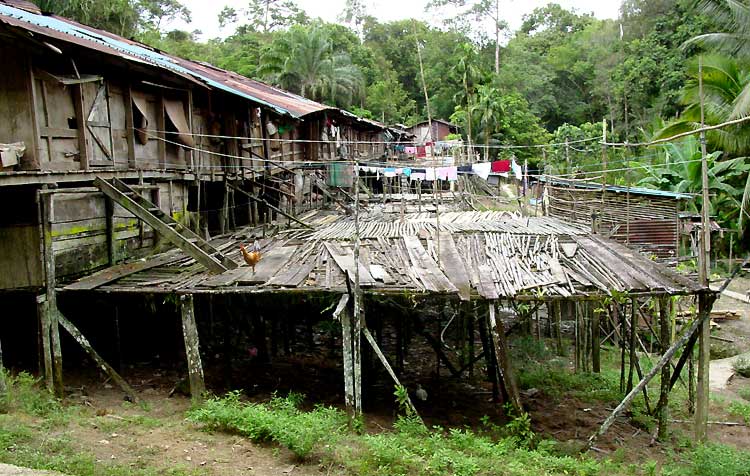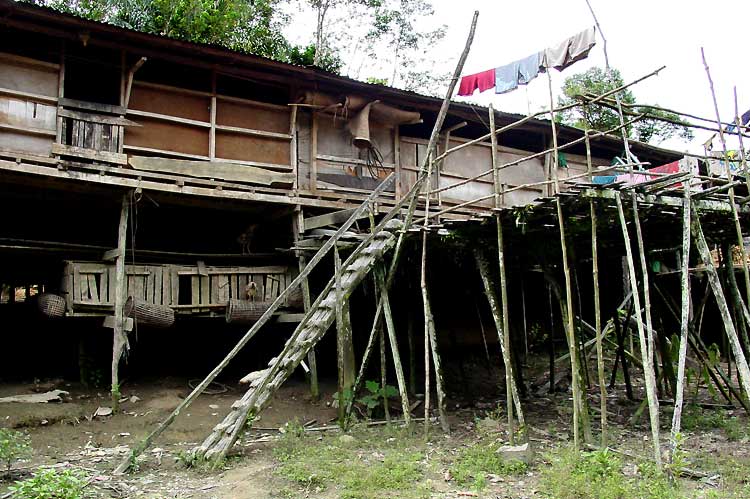Skandis Longhouse 3 / Sarawak

The longhouse faces the river. Each family unit in the longhouse has its own section, consisting of a room (bilik) with a solid door, an equal-width section of the common area onto which all rooms open, and an equal-width section of the porch (riau) -- which, as you can see, is a rickety affair made of split bamboo laid (not fastened) across supporting logs. We tourists were warned not to go out on the porch because it likely would not hold our weight, and believe me, we were not tempted. In addition to hanging laundry, the porch is used for doing work. An old man spent the morning out there building a door from fresh-looking boards.
Below, you can see some chicken coops on the left side, beneath the living quarters. The people kept a large number of chickens, which strut all around but are chased out if they come into the house. Several dogs and one very small, friendly, flea-infested cat shared the house. The people raise fish to eat in their own fish farm on the river; big bags of tilapia feed are stacked inside the longhouse.
First thing in the morning, most women went out to gather some food. They raise padi rice, vegetables and pepper on the hills above the house. (Black pepper is a major export of Sarawak; we saw pepper plants trained to climb poles in long rows everywhere as we traveled the roads.) The women strap a giant cylindrical basket on their back, put a conical hat on their head, and wearing long sleeves and usually pants, climb up a narrow path to the cultivated fields. When they return, the basket is filled with greenery. They make the baskets from grasses and rattan; the straps are made from tree bark.
One of the two women who cooked for us came in with what appeared to be some kind of tree leaves brimming from her huge basket. Later I realized I had heard a dull pounding coming from the kitchen for a very long time, so I went to investigate. In a small stone mortar she was mashing all the leaves to pulp. She already had a big blue plastic basin full of it. I signaled that I would like to try it and she gestured permission. But she had meant touch and not taste, because as I moved to put a clump into my mouth, both women urgently warned me not to do it. Pointing to the wok on the double-burner gas cooker (same as what most city Malaysians also use), they explained that the pulp had to be cooked. We ate it at lunch that day, and like everything we ate in the longhouse, it was delicious. The texture was heavier than chopped spinach but equally smooth. I don't know if they cooked it in chicken stock or just a combination of flavorings such as soy sauce, but the unique taste of the leaf remained, neither sweet nor bitter, a cross between mustard greens and collards.
